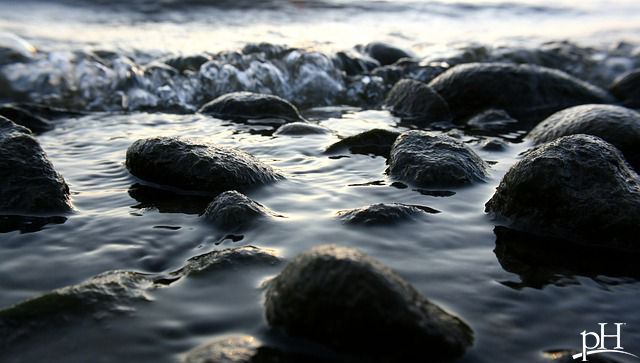Everything you need to know about kidney stones
11 years ago | Kidney Health
By pH health care professionals
Kidney stones can be unpleasant, to say the least. But if you know what symptoms to watch for, how to prevent them and what your treatment options are, you’ll have the upper hand when it comes to fending off kidney stones.
What do the kidneys do?
The kidneys are two bean-shaped organs below the ribs in the back of the torso. They are responsible for maintaining fluid and electrolyte balance by removing extra water and waste from the blood and converting it to urine. The kidneys keep a stable balance of salt and other substances in the blood. They also produce hormones that build strong bones and help form red blood cells. Urine is carried by narrow muscular tubes from the kidneys to the bladder, a triangular-shaped reservoir in the lower abdomen.
What is a kidney stone?
A kidney stone is a hard, crystalline mineral material formed within the kidney or urinary tract that is made from chemicals in the urine. Stones begin to form when there is too much waste in too little liquid and the stones attract other elements to form a bigger stone. Kidney stones typically leave the body by passing out through the urine stream. Kidney stones can be the size of a grain of sand, as large as a pearl, or even larger at the size of a golf ball. A stone can block the flow of urine and cause very severe pain. A stone may also break apart on its own and travel through the urinary tract all the way out of the body without causing too much discomfort.
Symptoms of kidney stones
There are different types of kidney stones. But generally, stones begin causing symptoms when they block the outflow of the urine from the kidney leading to the bladder because it causes the kidney to stretch. Typically, a person feels a sharp, cramping pain in the back and in the side of the area of the kidney or in the lower abdomen, which may then spread to the groin. Sometimes a person will notice blood in the urine. If the stone is too large to pass easily, the pain will continue as the muscles in the wall of the tiny ureter try to squeeze the stone along into the bladder. One may feel the need to urinate more often or feel a burning sensation during urination.
Risk factors for forming kidney stones
The peak age for kidney stones is between 20 years and 50 years. Caucasians tend to be prone to develop kidney stones, and men are much more likely to develop stones than women. Other diseases like high blood pressure, diabetes, obesity, osteoporosis, chronic diarrhea or kidney cysts might increase the risk of stones. Only about 25 percent of kidney stones occur in people with a family history of stones.
Prevention of kidney stones
- Drink up. Drinking a lot of fluid is important for treating and preventing all types of kidney stones. Staying hydrated will keep your urine diluted, making it less likely stones will form. Drink enough liquids (especially water) throughout the day to make at least two quarts of urine every 24 hours, and drink enough to have light-colored urine. Dark yellow urine is a sign of insufficient water or fluids intake.
- Find the cause. If you have had kidney stones before, you are more likely to have kidney stones again. To prevent kidney stones, you need to know what caused your kidney stone. Try to catch the stone as it passes in the urine. The stone can then be sent to a lab to find out what type of stone it is.
- Get your vitamins. According to theAmerican Urological Association, vitamin supplements may reduce the risk of stones in people who form calcium oxalate stones. Vitamin B6, omega-3 fatty acids and probiotics have been shown to reduce the risk of forming stones in some situations. If you form these types of stones, you should not take vitamin C or cranberry tablet supplements. They may increase your risk for stones.
- Consider a low-sodium and low-animal-protein diet.The more sodium you consume, the more calcium you’ll have in your urine. Your goal should be to reduce your sodium intake so that you consume less than two grams of sodium per day.
Treatment of kidney stones
The treatment for kidney stones usually depends on their size and what they are made of. You may need to begin with pain medicine. You should also drink lots of fluids. If you have a large kidney stone or your urinary tract is blocked, the urologist can remove the stone or break it into small pieces through shock wave lithotripsy (shock waves from outside the body are targeted at the kidney stone), ureteroscopy (small scope is inserted into the urethra and through the bladder to locate the stone and then break it up with laser energy) or percutaneous nephrolithotomy (a procedure that involves entering the kidney through a small incision in the back).
Be proactive and speak with your health care professional about whether or not you are at risk for kidney stones. And always make sure that you are drinking ample amounts of water. Your body will thank you!
Enjoy Your Healthy Life!
The pH professional health care team includes recognized experts from a variety of health care and related disciplines, including physicians, attorneys, nutritionists, nurses and certified fitness instructors. This team also includes the members of the pH Medical Advisory Board, which constantly monitors all pH programs, products and services. To learn more about the pH Medical Advisory Board, click here.







